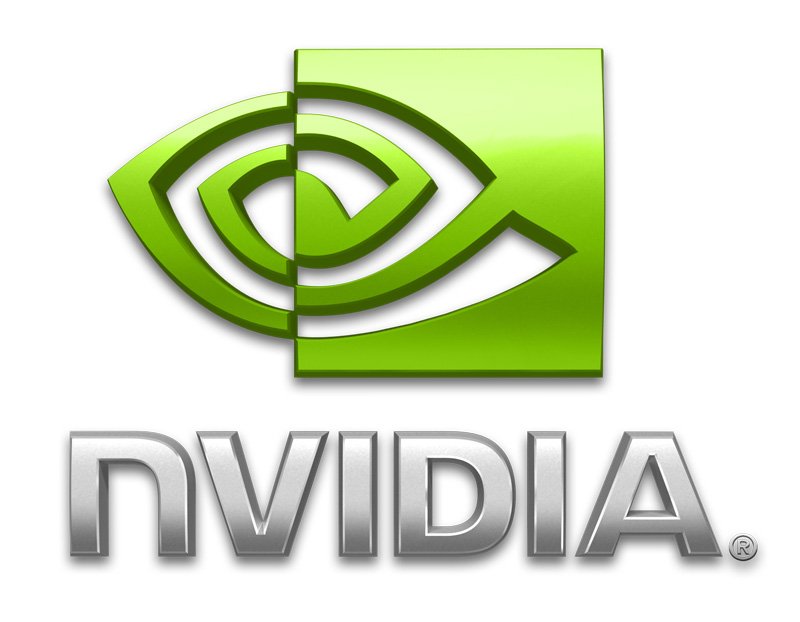Nvidia: GPU Failures Not Affecting Our Orders
Nvidia has said its sales are in no way harmed by the GeForce G84 and G86 fiasco that took place last summer.
In July of last year, Nvidia admitted in an SEC filing that some notebook chips were failing at “higher than normal rates.” According to the filing, Nvidia said it would incur a $150 to $200 million charge for the quarter, with the money covering warranty, repair and return and replacement.
A stock-bloodbath such as this is never good news for a company, however, vice president Ujesh Desai said at this year's Computex that, despite the effect on Nvidia’s reputation, computer builders are still choosing the company’s graphics cores and are actually increasing their usage this year. According to Electronista, Desai said that trying to fix the problem quickly helped preserve much of that business. "None of the OEMs held that against us or anything," Desai is cited as saying. "I think we stepped up and we did a good job with how we handled that."
That said, just because OEMs have all but forgotten, that doesn’t mean Nvidia’s problems are over. In May of this year, news got out that five people were suing Nvidia. The group feels that the measures undertaken by Nvidia are not enough and are seeking full replacement of the faulty chips along with unspecified damages.
Rather than recall faulty notebooks, manufacturers of laptops affected have gone through certain steps to help cover the problem. HP and Dell extended warranties and released new BIOS software that increased the fan speed to better cool the GPU – hopefully warding off any defects from showing up. Apple promised owners of the GeForce 8600M GT-equipped that it would repair for free any faulty GPUs within two years of purchase date, regardless of Apple Care coverage.
"This is a grossly inadequate 'remedy,' as it results in additional manifest defects, including, without limitation, further degraded battery life, system performance and increased noise in the Class Computers," the plaintiffs said in a legal filing.
"Worse, this 'remedy' fails to solve the actual problem. Instead, this measure only ensures that the Class Computers will fail after the OEM's express warranty period expires, potentially leaving consumers with a defective computer and no immediate recourse," the lawsuit continues. "Finally, even after this purported 'update,' video and system performance is still degraded due to unacceptably high heat and part failures.
We’ll keep you posted on how the suit turns out but it seems Nvidia thinks that it has done its part for the consumer, while its customers think differently. Do you think Nvidia’s effort to remedy the situation fell short? Let us know in the comments below.
Get Tom's Hardware's best news and in-depth reviews, straight to your inbox.

Jane McEntegart is a writer, editor, and marketing communications professional with 17 years of experience in the technology industry. She has written about a wide range of technology topics, including smartphones, tablets, and game consoles. Her articles have been published in Tom's Guide, Tom's Hardware, MobileSyrup, and Edge Up.
-
cryogenic Seems consumers are rather informed and didn't tax nVidia extra for the notebook failures of last summer. But my thinking is that nVidia should avoid this kind of fiasco in the future, else their reputation might take a hit, and consumers might respond more aggressively, once their reputation suffers.Reply -
Kill@dor Good to know they have their share of problems, but they do need step it up... I'm hoping their next lines of GPU's coming Q3-4 will deliver like they said. Even though G92's did not perform as well as i would have wanted, i was still impressed with my 8800GT. So, i think i'll give them sometime to work out the kinks...Reply -
Zoonie This is outragous really. Many of these chipsets came in pretty expensive laptops. Me, myself, bought an Sony Vaio 2 years ago with the 8600M GS chipset and I get nervous everytime a game gets a hickup.Reply
-
laptopfreak I think that nVidia should do a free replacement of all the defective units instead of having system builders turning up fan speed to lengthen the time before a serious hardware failure. It really doesn't show any responsibility on their part by only replacing failed ones and knowing that the others have the same problem but just haven't failed yet.Reply -
deltatux I don't know, a lot of my friends once they heard about the NVIDIA fiasco went all ATi on their notebook purchases.Reply
Probably just a small sample, but it's good that NVIDIA is recovery rather instantaneous on this mishap. -
I'll never buy another NVIDIA product. I bought a high end ASUS laptop expecting several years of life from it, but now I hesitate to use it for gaming (one of the main reasons I bought it) for fear of the graphics card failing. It will probably die in 6 mos after the warranty has expired. They should have given at least a 4 year warranty on every card affected. I hope they lose their a55e5.Reply
-
megamanx00 I don't think nvidia should do much more than help AIBs with the warranty repair as far as discreet graphics go. Still, since laptops aren't so easy to fix and replace I feel they really should have addressed the problem more seriously than they did at first, instead of trying to bury their head in the sand, and could have done a little more to try and remedy the situation. Oh well.Reply -
mayhemiam I am so proud to say that I also own 1 of those pieces of dog crap named the G92/94. Not on a laptop but a normal desktop. Still it has affected more laptop owners that desktop users. But hey it's ok; our manufacturers didn't mind also loosing a sizable chunk of their own money, right? That's about what that arrogant Ujesh Desai said. Let’s see if those oh humble and forgiving manufacturers will come knocking next time when they need a new GPU.Reply -
curnel_D In a buisness sense, bottom line type situation, they handled it perfectly. From a consumer standpoint, they're basically telling everyone who bought a PC with an affected chip to sit and spin.Reply
"Yes, we know your notebook will fail, and we know why. But no, we wont fix it, we'll just make sure your warranty is up before it does fail. Sorry." Thanks Nvidia! (I've only had one 8600 equiped notebook fail on me, but one is enough.) -
scook9 Now you all know why it is valuable to purchase a $300 protection plan (3+ year) for a laptop. Even being a responsible user, you can EASILY rack up over $300 of repair to a laptop in 3 years. And if the laptop is not expensive enough to justify the cost of the plan (that is less than $1500 or so), it is probably not a very good laptop. I guess my end note, at least for me, is that I plan on spending about $1800+ every 3-4 years on a laptop, either through multiple cheap ones, or 1 nice one.Reply
Through normal use and wear and tear, I have accumulated about $800 worth of repairs all paid for by HP/bestbuy all due to the 3 year accidental/protection plan I got on it (was $350 on a $2100 notebook). Now the same plan (which still has a year on it) is also helping me sell the laptop to someone else. Easily paid itself off. I only had a go 7600 (so G73 I believe) and was safe from this, but had it been a problem, I would have been mad all of about 10 minutes, then packed it up and dropped off at BestBuy and forgot about it. Peace of mind can be VERY worth the cost of a protection plan.
